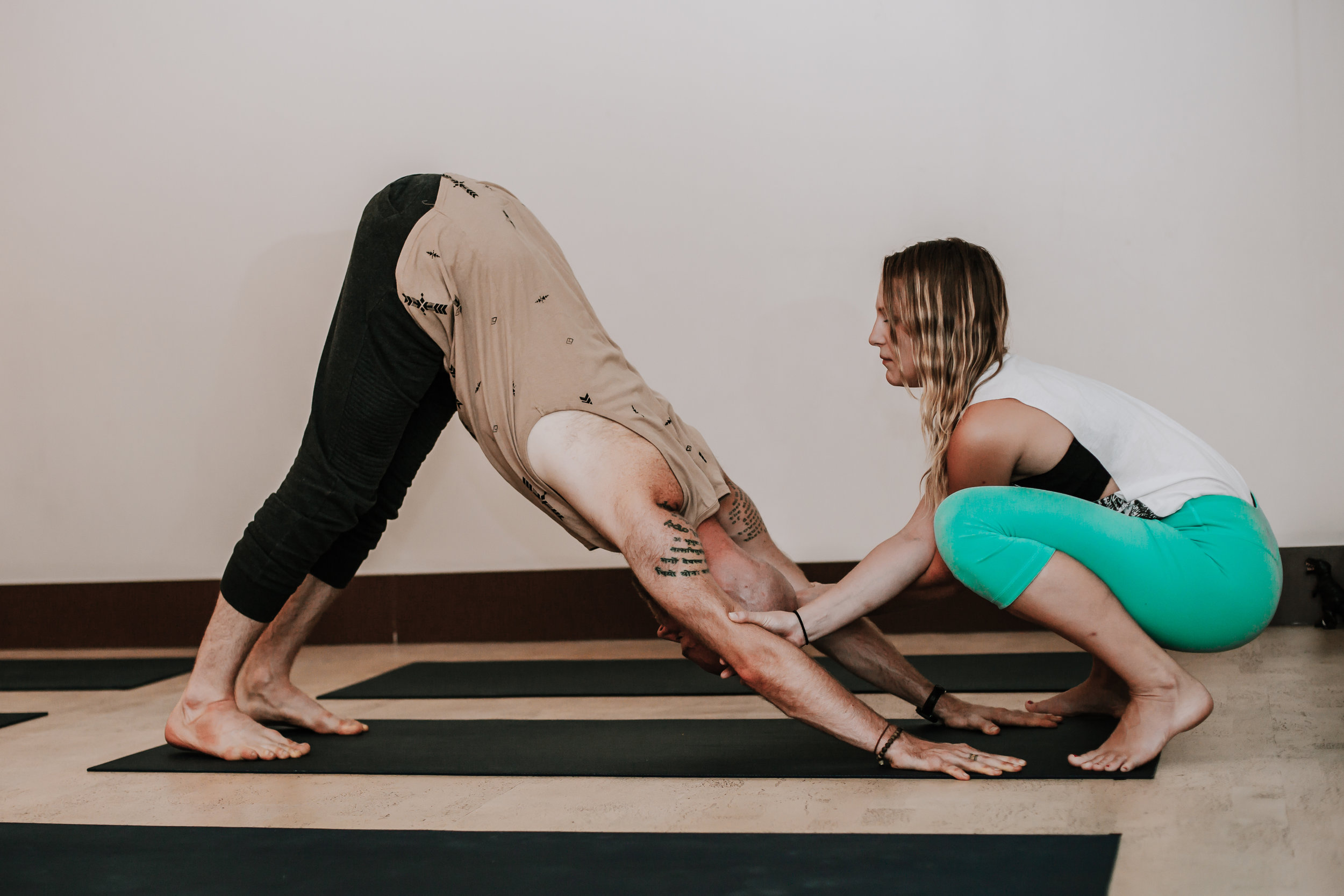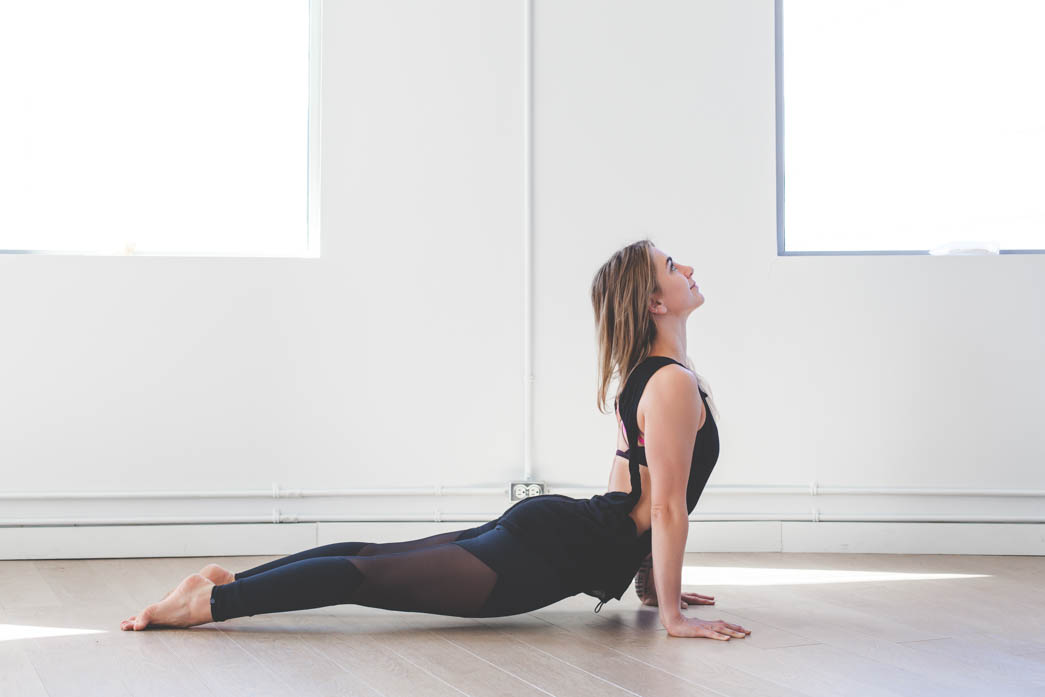Wrist Pain & Yoga: Physiotherapy & Yoga Perspectives on How to Resolve
Yoga is a great form of exercise that not only incorporates stretching, but also mindful awareness of your body through movement.
There are many schools of yoga with a wide variety of different poses. One of the most common schools of yoga is hatha yoga. The movement sequences, or flows, in hatha yoga incorporate exercises where you need to put body weight through your wrists. For example, downward-facing dog is one such pose.
It’s not uncommon for some people to experience wrist pain when doing these wrist-loading exercises. Wrist pain when doing body-weighted yoga poses can be a result from an old injury, a muscle imbalance or overtraining. Although you may feel your yoga practice is limited because of this, don’t fear!
In this article, Innovation Physical Therapy & Yogalife are teaming up to bring you a complementary perspective on this issue.
Wrist Pain in Yoga
There are a variety of yoga poses that can load the wrists. Downward Facing Dog, Upward Facing Dog, Plank and Chaturanga are among the most common poses especially in a Vinyasa style class.
There are quite a number of bones that make up the wrist joint. 13 in fact! These bones work together to provide flexibility and stability to the wrist. Wrist pain can occur in a number of places, but the most common would be just below the thumb in the small divot that shows up when you spread all your fingers. As well, pain can commonly be experienced on both the front and back of the wrist.
Yoga Recommendations on How to Reduce Wrist Pain
When starting out in yoga, there is a common tendency to grip like a bear into the yoga mat. This can end up causing pain at the base of the wrist. When you’re in the plank position lowering down to Chaturanga (or half push up), your elbows need to stay close to your body. Your legs should remain engaged while you lower down to the floor. This will keep your weight distributed throughout the body rather than using only your hands to lower your body.
One of the main instruction cues that yoga teachers remind students during a weighted wrist pose is to focus on pressing down into the base of the thumb and index finger. This helps to take the pressure off of your wrist. When you’re starting out in yoga, it’s easy to lift your thumb and index finger off of the matt which causes excess tension and body weight to be translated through your wrist.
Another important strategy to reduce wrist pain is to activate your core a little more so your body weight shifts away from your wrists. It’s also important to not forget your legs. Activating your legs in any pose (even a handstand) will help you lift your weight out of your hands and spread it more throughout your body.
It can also be helpful to stretch your wrist muscles as well as opposing movement to help relieve any of the repetitive strain you may feel when practicing yoga.
If yoga students need to reduce or avoid weight bearing through their wrists then yoga instructors can adapt poses to help reduce wrist strain. This could include weight bearing through the forearms as opposed to the wrists (e.g.baby cobra instead of upward facing dog for instance) or using a closed fist (e.g. during chaturanga) to help maintain the wrist in neutral alignment.
Finally, it may be necessary to look at transitioning to a more gentle class style that has fewer wrist loading poses.
PT Recommendations on How to Reduce Wrist Pain
As physiotherapists, we focus on understanding the root of your pain and it’s no different if you are experiencing pain in your wrists during yoga.
It is hard to say what could be causing your wrist pain since we have not physically examined your wrists or upper body. But assuming no specific injuries, there is one foundational concept we find helpful in those with wrist issues during yoga.
The concept we want to share is the importance of opposing muscles sharing an equal amount of tension and length. Let us explain.
You have muscles on the front of your forearm (that let you grip) and muscles on the back of the forearm (that let you extend your fingers). These muscles cross the wrist. When one group of muscles tightens more than the other, the unfortunate result can be increased strain through your wrist joint.
We do a lot of gripping in life (writing, holding things, opening doors, lifting weights, etc) so it’s likely that your wrist flexors will become shortened in relation to your wrist extensors. This can strain your wrist and you may find yourself experiencing pain with yoga poses.
The solution: Start working on strengthening your wrist extensors. This Youtube video walks you through what this looks like. Low weights are ok (typically 1-3 pounds) and focus on working up to 3 sets of 15.
It goes without saying that getting assessed by a physiotherapist is important to understand what is going on. There are many other reasons for wrist dysfunction! Also you may experience numbness and tingling in your hand and fingers. This is something not to ignore and should be looked into.
Key Takeaways
We hope you found this article helpful bringing together two different perspectives on wrist pain during yoga. Here are your key takeaways:
- Engage your leg muscles while doing yoga poses so your weight can begin to move throughout the body and not just your hands
- Increase your contract pressure through your thumb and index finger during wrist load bearing poses so pressure through the wrist is reduced
- Balance the muscles that cross your wrist joint by strengthening your wrist
- Adjust your poses to take weight off your wrists
Next Steps
Need to dig a little deeper? We’d recommend you give Innovation Physical Therapy a call to get an in-depth assessment of your movement challenges. They have 6 physiotherapy clinic locations throughout Edmonton & Sherwood Park including Riverbend, Meadowlark, Belvedere, Namao, Sherwood Park and West Henday (January 2018).
For all our Yogalife guests, you can now benefit from Yogalife priority bookings, rates and access to their therapeutic facilities through our new Yogalife + Innovation Physical Therapy priority access program. Simply, provide your Yogalife member number at time of booking. Call (587) 524-8200 to book an appointment.




